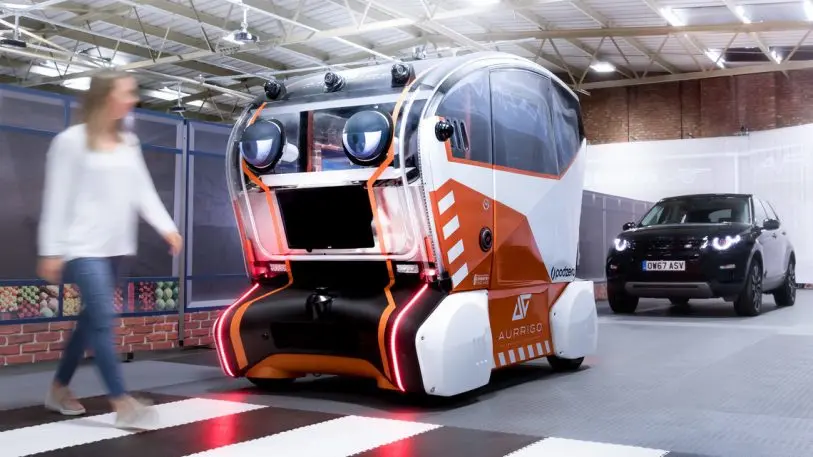As many as 73% of Americans don’t trust autonomous cars, according to a 2018 survey by the AAA.
It’s a major problem that carmakers and tech companies are attempting to solve in a number of ways–for instance, by developing autonomous cars that talk to people nearby and even “smile” to indicate they can cross. The engineering team at Jaguar recently partnered with cognitive scientists to develop another solution: Put huge googly eyes on the front of its prototype vehicle. It may look incredibly stupid, but there’s sound science behind it.
The team’s eyes aren’t actually googly eyes, of course. Jaguar Land Rover’s Future Mobility division designed a set of digital eyes that act like our own eyes, following the objects they “see.” These eyes don’t actually see anything, but they communicate how the car’s systems are tracking nearby objects through its camera and LiDAR sensors, a technology that is similar to radar and uses lasers, rather than radio waves, to sense objects. In theory, by following whatever moving object is directly in front of the car, these faux-eyes communicate to pedestrians and passersby that the vehicle has “seen” them.


After all, this is how pedestrians gauge their own safety with human drives, too. “It’s second-nature to glance at the driver of the approaching vehicle before stepping into the road,” explains Pete Bennett, Future Mobility Research Manager at Jaguar Land Rover, in a release.
Still, there’s a lot more work to be done before people will instinctually trust autonomous cars. Statistically, research suggests they’ll have dramatically lower accident rates than human drivers, yet people who live in cities with early test programs still seem to hate them–in many cases, seemingly, because they don’t drive like humans. To a certain extent, it may simply be a matter of a progressive cultural shift, the likes of which has accompanied every other historical change in transportation technology. A much higher percentage of millennials (56%) trust autonomous cars, but that number drops as people get older: 41% of Generation X, 23% of Baby Boomers, and 18% of Pre-Boomers trust AVs. In the end, smart interface design–like googly eyes–may simply serve as crutches to help society through this transitional period.
I’m all for autonomous cars, myself, but I’m also all for design that aids the experience of people, too. Maybe some enterprising AV designer should add some blue fur and a free cookie dispenser.
Recognize your brand’s excellence by applying to this year’s Brands That Matter Awards before the early-rate deadline, May 3.